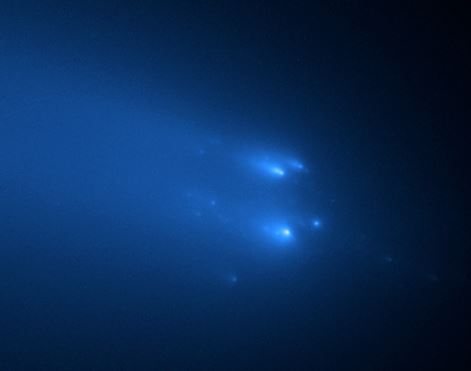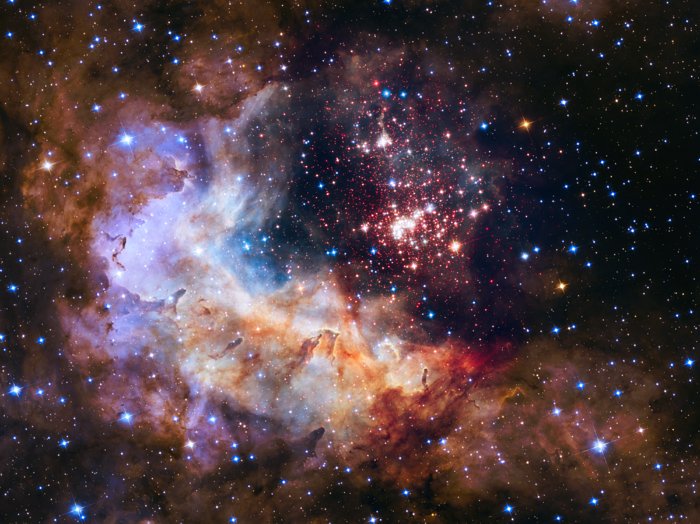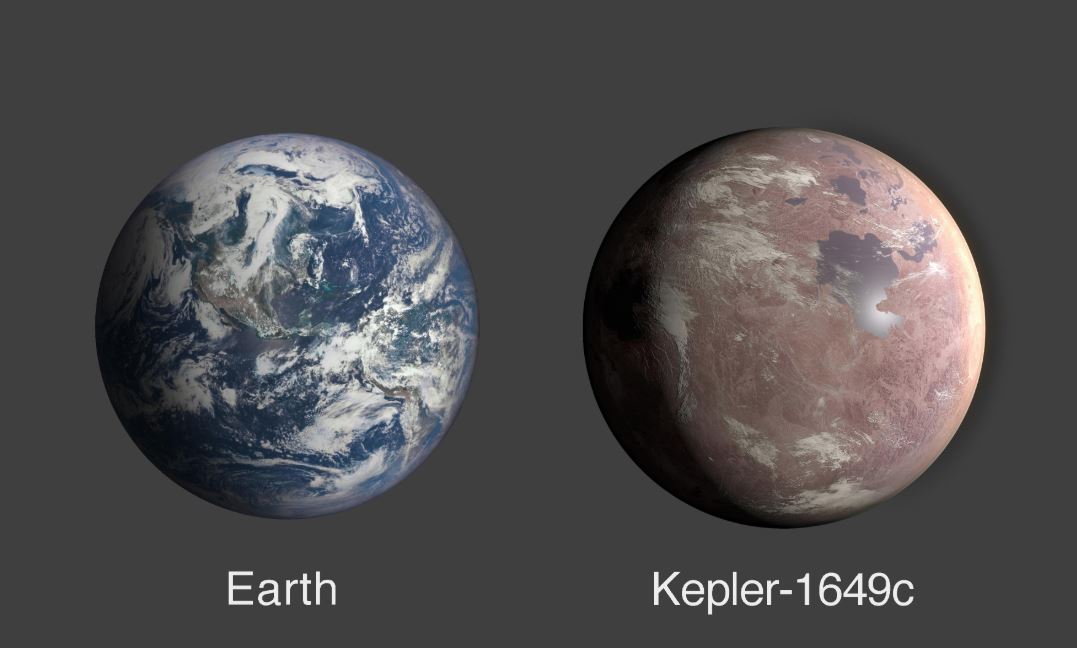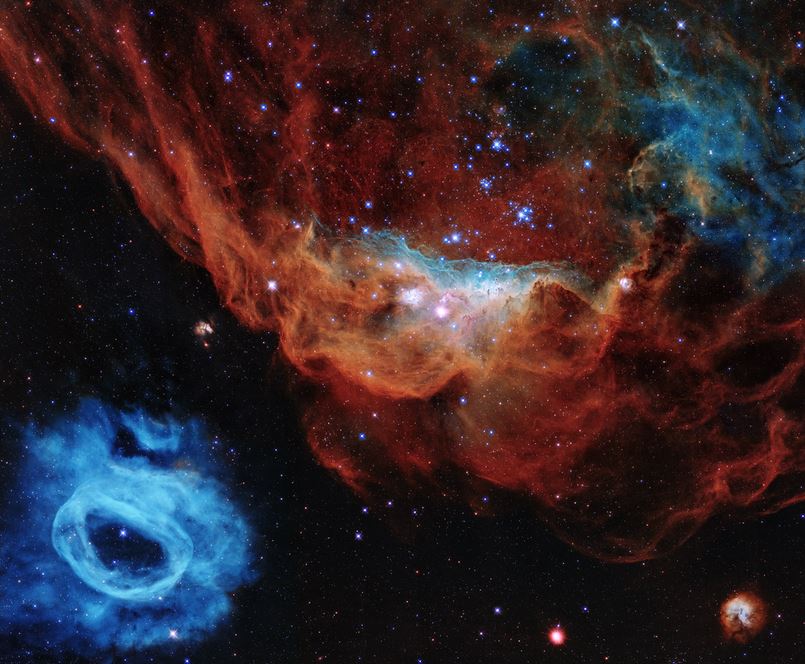MASS Meeting Notes for July 20, 2018
We had a good turnout with Dean, Keith, Dave, Jim A. and myself in attendance. We started our 7th anniversary meeting with some of our recent experiences. I had finished COD astronomer Joe DalSanto’s two astronomy courses each consisting of 12 well produced videos available on YouTube. The course titles are “Stars and Galaxies” and “Solar System Astronomy” and I highly recommend them. Silvio, Harry and I also went to Mr. DalSanto’s free College of Dupage lecture, “The Milky Way” on June 23 which was very entertaining.
The upcoming Triton College Skywatch sounds like it will be a good one. Both Dan Troiani and Kevin Cole are scheduled to talk about Mars on Saturday, August 11th at 7 PM.
Because I’m a big factoid guy, I announced that the Soyuz capsule has just exceeded the Space Shuttle in number of launches. The Shuttle had its last launch (number 135) in July 2011, the month of our first MASS meeting. The Soyuz which has been launching since April 23, 1967, had its 136th launch with Soyuz 54S to the ISS on Mar 21, 2018 and its 137th with Soyuz 55S in June 6, 2018.
Because today is the 49th anniversary of the first moon landing, we had to note the death of Alan Bean on May 26, 2018. He is the 8th moon walker to have passed (four still are alive). The Apollo 12 and 14 missions have all 3 of their members already deceased. I sure hope some of them are alive to see the United States return astronauts to the surface of the moon.
We led off the meeting with discussion of asteroid missions since June 30th was Asteroid Day and the 110th anniversary of the Tunguska Event where an asteroid or comet exploded over Siberia and leveled 800 square miles of forest. As of this year’s Asteroid Day, 18,300 Near Earth Asteroids (NEAs) have been found. Tunguska was estimated to be a 40 meter diameter object. So far only 33% (8216 objects) of the 140 meter or larger objects that could cause a regional catastrophe (could destroy a state) have been identified.
Our first topic of discussion was asteroid missions:
- First was the Japanese probe, Hayabusa 2 (Perigrine Falcon), has arrived at Ryugu (Japanese for Dragon Palace). Ryugu is a 900 meter diameter C-type (carbonaceous) asteroid rich in organics, carbon and water. It is an ambitious mission with 2 impactors, 4 hoverers, 3 surface hoppers and the Mobile Asteroid Surface sCOuT (MASCOT). The probe is in a 12 mile high orbit and will study the object for 18 months before trying to take a sample and return it to earth in 2020. Ryugu looks square and rotates slowing which will help the mission when taking its sample. The first Hayabusa probe visited asteroid Itokawa in 2006 and touched down three times to bring a small sample back to Earth. Analysis revealed that Itokawa was a loose rubble pile rather than a chunk of solid rock.
- The second asteroid mission is from the US and named Osiris-Rex. Its mission is to take a sample of asteroid Bennu. Bennu is a 500 meter object the size of the Empire State building. Osiris-Rex is expected to encounter Bennu on August 17 of this year and obtain its sample on July 4, 2020 and return it to the Earth.
- We made quick pass over Commercial Crew by first showing the members guesses for when the US would send astronauts back to the ISS from US soil. Keith will win if the docking occurs July 28 to Aug 14, I win if it happens Aug 14 to Oct 11, Harry gets the prize if it happens Oct 11 to June 21 of next year and Sophia gets the Dairy Queen gift card if it happens after June 21 of 2019. See the MASSPrize2 section of the website if you want to see the details of our contest. All of us except Sophia seem to have shown too much optimism. On Aug 3 NASA is planning to put out a new schedule. If things haven’t slipped too much my money in on Harry. Otherwise Sophia is a shoe-in. SpaceX has their Dragon 2 capsule at KSC undergoing testing before the un-manned capsule mission launch still scheduled for August. Their manned mission is still planned for December. Boeing had an anomaly on their abort rocket thrusters. After a full duration test, the valves did not shut off the hydrazine fuel. Their abort test date is now uncertain. Their unmanned test is still shown for August and the manned test for November 2018. NASA is working to a very hard schedule date of January 2020 for the end of their last purchased Soyuz mission from Russia. They are buying a few extra months by extending some of the ISS Expedition durations and talking to Boeing about making their test manned mission a pseudo-production mission by adding a third astronaut and extending the mission duration from two weeks to six months. This doesn’t sound good. There also is talk that NASA will give the Commercial Crew vendors a waiver to reduce their “Loss of Crew” probability from the desired 1 in 270 to 1 in 135.
- SpaceX keeps launching more and more satellites. On May 11, 2018 they launched their first Block 5 (last update to Falcon 9) rocket with the 7700 lb Bangabandhu satellite for Bangladesh. Block 5 is optimized for reusability and includes retractable landing legs, a thermal protection coating, titanium grid fins, an 8% increase in engine thrust to 190,000 lbs, more robust carbon overwrapped Helium pressure vessels, and new fairings with parafoils. These first stage cores are expected to provide ten launches with minimal refurbishment. And after a little work, come back for another ten launches. They are expected to top out at 100 launches each. Musk hopes that this version will bring the cost of a refurbished core launches from $50 million down to $5-6 million. They currently charge $62 million for a new Falcon 9. Previous versions of the Falcon 9 core stages have never flown more than a second time. Falcon 9 rockets costs are listed as: 60% for the first stage, 20% for the second stage and 10% for the fairings. The remaining 10% is launch costs and fuel ($500,000). The next launch from Vandenberg in California will see an attempt to recover the fairings with a newly modified boat named, Mr. Steven. The net on Mr. Steven has been quadrupled in size to try to insure a successful catch of the fairing. Each fairing half is listed as $3 million. Due to high winds and large waves the fairing recovery attempt was unsuccessful. The new carbon overwrapped Helium pressure vessels were not on the Bangabandhu satellite launch. Word is they will first be utilized on the Falcon 9 second stage that launches the initial uncrewed Dragon2 capsule this Fall. NASA has stipulated that at least 7 launches of the Block 5 with the new Helium pressure vessels have to occur before people can be launched on the rocket.
- Could Blue Origin beat SpaceX in launching people into space? We listened to “Answers with Joe” podcast about how Jeff Bezos runs Blue Origin. They recently had their ninth successful sub-orbital New Shepard launch and capsule return. The New Shepard first stage lands back at the launch pad. The capsule is capable of carrying 6 people on a 12 minute flight to over 100 km. Blue Origin plans to start a commercial program of launching people but has not set their price yet. Remember that Blue Origin was the first to successfully land the first stage of a rocket in November 2015, just 28 days before Elan Musk did it with his Falcon 9 on December 24, 2015. Musk was quick to say that the accomplishment of sub-orbital landing versus a orbit capable rocket was like comparing apples and oranges. Because sub-orbital rockets only have to achieve Mach 3 and his Falcon 9 reaches Mach 30 and that energy increases with the square of the velocity, the sub-orbital feat deals with only 1/100 the energy of his Falcon 9. Blue Origin’s corporate motto is “Step by step, ferociously” whereas SpaceX’s is “Head down, plow through the line.” The different corporate cultures might indicate why it seems SpaceX is in the lead. But the development of Blue Origin’s new BE-4 rocket engine and their larger New Glenn rocket might tip the scale in their favor.
- Global dust storm shuts down the Opportunity rover, SpaceX has submitted big plans for expansion at KSC and the Axiom company is planning a commercial space station – TMRO show talked about all three of these topics in their show (6:17 to 23:30 mark of the video). The dust storm, which is now global, was first detected on May 30. By June 6 it began obscuring the rover’s solar panels and by June 10 opacity of the atmosphere was twice as high as ever recorded in the previous 14 years of rover operation. The rover which was expected to last for only 90 days is expected to recover when the store abates. The nuclear powered Curiosity rover, is unaffected. Curiosity landed in 2012 and is slowly climbing Mr. Sharp. It recently released results of 55 months of methane concentrations. It found that that there is over a doubling of methane concentration during the summer in the northern hemisphere. Scientists are guessing that it comes from gas trapped in the permafrost. Curiosity also heated core samples drilled from a 3 billion year old mudstone and found organic molecules such as those found in organic rich Earth rocks. In the second topic, SpaceX plans launch and landing control centers, a rocket garden and a viewing tower at KSC. They anticipate 10 Falcon Heavy launches with 63 landings per year (54 landings are from the Falcon 9 and 9 are triple landings from Falcon Heavy). That is 81 first stage cores coming back to land!! The last topic is the cool new Axiom space station in Low Earth Orbit. Only $55 million will give you the complete astronaut experience.
- A search for axions as the next dark matter particle begins. UC Berkeley is using ADMX (Axion Dark Matter Experiment) device. The axion is a hypothetical sub atomic particle. It is very light (10^-5 to 10^-3 ev vs electron being 500,000 ev and a neutrino 2 ev) and electrically neutral. I don’t understand how the axion can be candidate for all this missing mass when the neutrino weighs even more than it. Somehow axions would have stopped interaction with normal matter at a different moment than other more massive particles which are fermionic and experience more friction and scattering, their rings surrounding galaxies would be less pronounced. This is the first experiment that achieved necessary sensitivity to hear signs of dark matter axions. Using a SQUID (Superconducting Quantum Interference Device) as an amplifier at University of Washington. Also comments from Fermi Lab personnel on the video. Search is like tuning thru the FM radio band looking for a channel. It could take a career (20 yrs?) to find. Dark matter is the missing 84% of the matter in the universe. So far, we have tried to detect MACHOs and WIMPs without success. Axions are becoming the favored alternative. Axions typically travel thru the earth without interaction. Experiment encourages axions to convert to microwave frequency photons and uses quantum amplifier to listen for them. The search is done at only milli-degree Kelvin or -460 degrees Fahrenheit.
- Detection of a single neutrino from a blazar opens the possibility of a third method to investigate the cosmos along with light and gravity waves. The “Ice Cube” detector in Antarctica which has 5000 light detectors buried up to 2km deep in clear ice, detected a neutrino last September that had 700x the power of solar neutrinos and 20x the energy of anything we can create in our accelerators. “Ice Cube” can tell within a quarter degree of the location in the sky, where the neutrino came from. A week after discovery, an astronomer from the Hiroshima observatory noticed that the location was close to a blazar in the constellation Orion and 4.5 billion light years away. A blazar is a quasar where the earth is in the firing line of the energetic jets that shoot out of the poles of the rotating accretion disk. About 4000 blazars are known. TED 2015 talk on Blazars (4min shows the diversity of analysis). Neutrinos are known as “ghost particles” because they easily pass thru the entire earth (they could easily travel thru a light year of lead without interaction), have very little mass (if electron in 500,000 ev, a neutrino is only <2-3 ev) and has no charge, so they aren’t deflected by magnetic fields or interact with mass in their travels thru space. They have been detected coming from the core of the Sun. They are a fundamental particle and come in 3 flavors (electron, muon and tau) that can transmute between themselves as they travel thru space . Proposed in 1930 but not detected until 1956. The sun emits 70 billion neutrinos per square cm per sec (size of a fingernail) at its surface. Some detectors use cleaning fluid which is converted into a gas that can be detected. Fermi Lab makes muon ones and sends them 800 miles thru the earth to a mine in South Dakota. The discovery is a big deal because this is a third independent way to study the cosmos along with EM radiation and gravity waves. We’ve monitored the Sun and were previously able to detect ones from the 1987 supernova in the Large Magellanic Cloud. The original occurrence of the single neutrino had only a 1/1000 chance of being just a co-incidence but scientists need a 1 in 3 million chance to claim it as a true detection. 6 days after the blazer linkage, a gamma ray observatory in La Palma Canary Islands confirmed that the blazer was sending out high energy gamma rays and this strengthened the evidence. Finally the Ice Cube scientists went back in their historical data and found 13 neutrinos coming from the blazer starting in a 4 month period in Oct 2014. The 3 papers now are considered sufficient evidence to make the claim. Speaking of quasars, 3C 273 in Virgo is the brightest quasar. It shines at magnitude 12.9 and I was able to identify it with my 8” telescope in the darker skies of Wisconsin during the 1960’s. It was only a faint blue star but the knowledge that the photons hitting my eyes had been traveling for 2.5 billion years was humbling. Another mysterious highly energetic particle are cosmic rays (protons). Their source is unknown. Some have been known to have the kinetic energy of a fast ball in baseball. I always worry when astronauts are doing EVA’s about what would happen if one of them gets hit by one.
- Israeli X-Prize vehicle to try moon landing in Feb 2019 via a SpaceX launch. Although the X-Prize has dropped its prize money the teams are still trying to achieve moon landing. SpaceIL will launch in Dec 2018 on a Falcon 9. The video shows the 585 kg hopper called Sparrow that will last for 2 months searching for nuclear fuel and water. It will also send back video and plant a flag. If successful they will be the 4th country to soft land on moon. It is a $95 million project. They were one of five teams that made it to the final stages of the X-Prize(Moon Express, Synergy Moon, Team Indus and Team Hakuto). Other teams like Hakuto from Japan were to share a launch with the Indian Team, Indus, on a PSLV Indian rocket, now their 4 kg rover, Sorato, will hitch a ride with Chile’s rover, AngelicvM, on Astrobotic’s Peregrine lander in 2020 on an ULA Atlas 5. Team Indus has a lander, HHK1, and a rover, ECA and is aiming for a 2019 launch on an unnamed vehicle. Moon Express has a program to put small payloads on the moon thru a new NASA program encouraging small soft landing lunar payloads.
- James Webb Space Telescope (JWST) delayed again due to human error and other technical problems. They are now aiming for a launch on March 30, 2021. Development costs have risen to $8.8 billion and the total cost to $9.66 billion. Human errors in testing when incorrect solvent was used to clean fuel valves and fasteners on the sun shield that were not torqued properly and caused tears in the blanket. The project is now 13 years behind schedule. NASA’s administrator Bridenstein comment on the JWST delay.
- TESS has achieved final orbit and hopes to begin science at end of July. Exoplanet count is at 3748 (as of July 12th). TESS plans to find 4000 more over a 2 year span. SpaceX launched on 4/18/18 on a Falcon9 into a highly elliptical orbit in green, after some thruster firings it will have an encounter with the moon that puts it into the yellow orbit and then with some more thruster firings will place it into a stable red orbit that has it circle the Earth twice for every moon orbit. This is the first time that a lunar resonant orbit has been used. TESS will monitor about 200,000 bright and close stars over 2 years but there is a request to add another 3 year mission after that. The extension could bring its planet finds from 4000 to 20,000. TESS stares at one window of the sky for 27 days. Kepler the previous exoplanet finder was in a heliocentric orbit 10 million km from our planet. TESS’s orbit will be very stable and its close approach to Earth minimizes the need for a large transmission dish and doesn’t require a lot of energy. Close approach is 108,000 km and far side is 373,000 km from Earth which is just outside the moon’s orbit. Its data dump only last 3 hours of its 13.7 day orbit. Its cost is $200 million, only one third of Kepler. Its 4 lens are only 10 cm in size versus Kepler’s .95 meter mirror. It will search 85% of sky verses Kepler’s small patches (1.5 min video). Its stars will be 30 to 300 light years away and 30 to 100 times bright than Kepler’s targets.
- Insight(INterior exploration using Seismic Investigations, Geodesy and Heat Transport) launched on May 5. It is the first California launch of an interplanetary probe and NASA’s 20th mission to Mars. It aims to drill down 16 ft into soil. The probe has a seismometer sensitive enough to detect an elephant walking on the opposite side of Earth. Two test cubesats called Marco (Mars Cube One) A & B will transmit information from the Entry, Descent and Landing (EDL). These are the first interplanetary cubesats. Landing will be on November 26, 2018.
- NASA will fly the initial low power version of SLS a second time with crew. The original plan was to launch an uncrewed 70 metric ton (mt) lift version (Block 1) of the rocket only once. Then develop a more powerful second stage that would increase the lift to 105 mt (Block 1B) before the second crewed SLS is launched. The only problem is that the Orion capsule access height changes between the two versions of the SLS and NASA only had a budget for one mobile launcher. Modifying the launcher would take 33 months. That is a long time between flights 1 and 2. So Congress has given NASA got an extra $350 million to build a 2nd launch platform for SLS. The second launch platform will support Block 1B. It would be ready for the planned 2023 launch of crewed flight. Now NASA can plan on more Block 1 flights. Possibly the Europa Clipper spacecraft could fly on Block 1. May fly Block 1 up to 3 times and get manned mission sooner because they won’t be affected by delays to the more powerful upper stage. But now the 2nd stage of the Block 1 has to be man rated if crews are to be launched on it. That wasn’t part of the original plan. Another complication is that the Block 1 is powerful enough to launch parts of Deep Space Gateway orbiting the moon. The lower powered upper stage, can only fly up to 9 tons to CIS Lunar space. By flying the Block 1 more frequently, NASA is opening itself up to criticism that its rocket is not that much more powerful than Falcon Heavy (64mt) or New Glenn (45mt) which have comparable lift to LEO. Definite decision to fly Block 1 multiple times and human rate ICPS (Interim Cyrogenic Propulsion Stage – modified Delta 4 second stage) has good diagrams of parts of Block 1 and how Block 1 and Block 1B vary in height. Block 1B uses EUS (Exploration Upper Stage) that is longer. Exploration Mission (EM1) launches in mid 2020 in the plan. In old plan EM2 (first manned mission) was in 2023. ML2 (Mobile Launcher) now expected to be ready in 2022 and will be a 44 month effort. Europa Clipper mission now keeping their probe under 6 mt of weight so that they might be able to adapt to a less powerful Block 1 or commercial rocket. Diagram of SLS Block 1, 1B and 2 on page 4 of website.
- Orbital ATK’s Cygnus capsule raises the ISS orbit with a 50 second burn. It raised the orbit of the 450 ton space station by 90 meters or 295 feet. This is a very important capability if Russia decides to abandon the ISS. Their Progress capsules are the only orbit altering capability currently.
- 12 new moons discovered around Jupiter. This brings the count up to 79. Many of the moons are only 1-2 miles in diameter and some smaller. Many of the moons are in retrograde orbit but one called Valetudo is going in the opposite direction. (good diagram). Scientists feel that Valetudo ( only 1 km in size) will crash into these other moon perhaps creating a new ring around Jupiter. All the moons were discovered with ground based instruments (Blanco 4 meter telescope in Chile). There is now a total of 193 moons in solar system, 8 orbit dwarf planets (5 Pluto, 2 Haumea, 1 Eris) and 185 around full sized planets (Jupiter 79, Saturn 62, Uranus 27, Neptune 14, Mars 2 Earth 1). Plenty of places to explore in our Solar System!!
- In other Mars rover news, I mentioned that a demonstation helicopter is now officially a part of the rover to be launched to Mars in 2020. It weighs just 4 lbs and has two sets of counter rotating blades operating at 3000 rpm. Mars’ atmosphere has only 1% of earth air density. The copter needs to be autonomous. You can’t fly it with a joystick when the signal delay is 4 to 20 minutes. It can recharge and operate for 30 days and plans have it making 5 flights of 90 seconds or less.
We ran out of time and didn’t watch any of the DVD I purchased from Astronomy Magazine titled “Backstage Pass – Chicago”. It has 4 segments that concern, Yerkes Observatory, Fermi Lab, the meteorite collection at the Field Museum and Adler Planetarium. There will be other times to watch.





2 Responses
Nice write up, Jim! Thanks again from all MASS members!
This is so helpful and a really great compilation of information! Thanks, Jim!
Comments are closed.